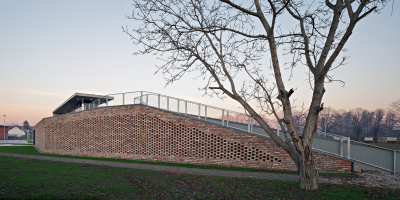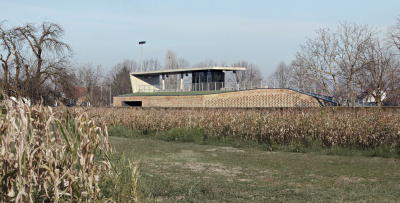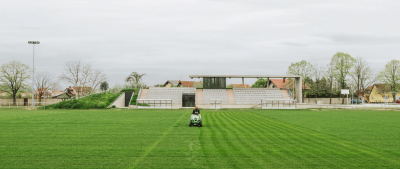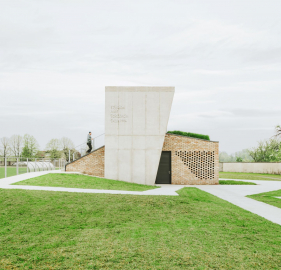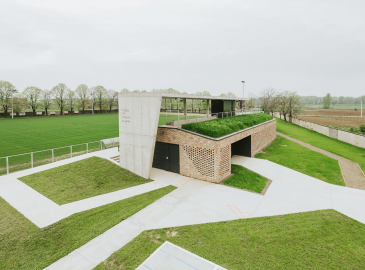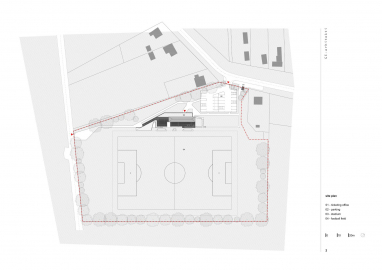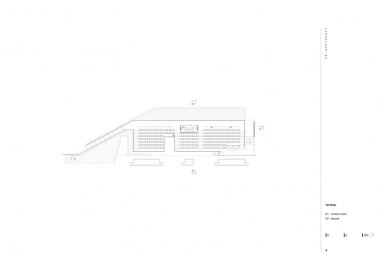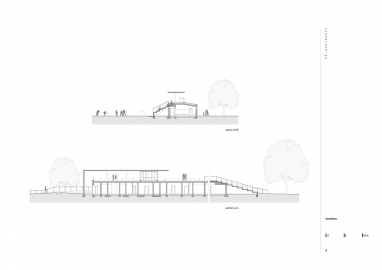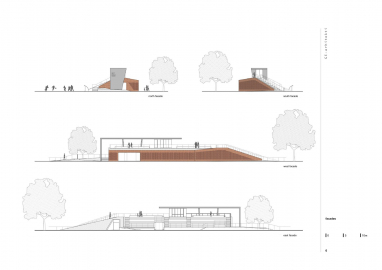Stadium Luka Šokčević Šaljapin
Creative low budget stadium design uses bricks from flood demolished houses and creates an interesting story embedded in the building as a memory after catastrophic event hit eastern Croatia in 2014.
Stadium Luka Šokčević Šaljapin is situated in Gunja, a village in eastern Croatia. After catastrophic flood hit Gunja and neighboring villages in May 2014, almost all of the buildings where affected and most demolished in total. Croatian Football Federation together with World (FIFA) and European (UEFA) Football Federation gathered funds for reconstruction of 5 football fields together with a new stadium building which was considered to be the crown of the overall reconstruction. Particular attention in this valuable project was devoted to the construction of a new stadium as the center of gathering, interaction of the local community and the development of new generation of athletes. The goal of this construction was to encourage the revitalization of the local community.
Concept is characterized by fitting the building into the context of greenery and rural ambiance. The initiator of the concept is the very cause of construction - a catastrophic flood that destroyed the old stadium and was materialized through usage of bricks.
The budget allowed only the most basic functions of the building to be met, leaving minimum space for its visual appearance. This required great architectural creativity and engineering flexibility in order to give the building also a visual value, besides the functional one. The financial constraints have deprived the building of numerous technological elements and brought the focus on the architecture and added value that it can contribute.
The shape of the building was mostly influenced by the rural context and the location of the building situated in a green environment that can be described as a park venue - alley of high linden planted along the edge of the parcel creating a natural, green scenography seen from the stadium. By designing the stadium to raise out of the field, designer creates symbiosis of architecture and environment as well as symbolic memory of the event created by embankment breakage.
The most prominent element of stadium's visual identity stands out in its main facade. It is made out of bricks and gives a monumental value given that the bricks originate from the ruined houses destroyed by floods. By selecting between 12,000 preserved pieces, the best preserved were used through special re-built technology.
The visual identity of the building arises from meeting the basic needs for performing sports function. The materials used are chosen in the spirit of this rudimentary functionality which is why natural concrete prevails in both interior and exterior.

